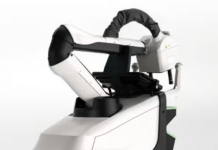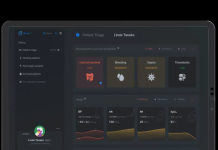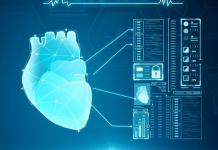Lana Patapava, from CardioX, provides some insight into an AI-enabled technology that can help monitor blood pressure.
Wearable technology has gained a major following in recent years. From heart rate monitors to smartwatches and other fitness trackers, the innovation in personal health tools is rapidly evolving.
The technology allows you to seamlessly track and manage your health parameters, like heart rate, HRV, body temperature. It can help you reach your fitness goals and keep your physical activity optimised to your lifestyle.
One of the most exciting features of the latest wearable devices is ECG recording, which can detect abnormalities in heart rhythm patterns. Just to think that only a short time ago the ECG test could only be done at the doctors’ office, but now all you need is your smartwatch or a portable ECG monitor. Most devices with ECG feature will even have an option to share your ECG with a doctor.
The next big thing in personal health and fitness trackers is Blood Pressure monitoring.
Blood pressure is one of the most important physiological parameters that maintains cardiovascular health. Many clinical studies have confirmed that aggressive Blood Pressure management (lowering systolic bp to less than 120 mm/Hg) dramatically reduces the risk of heart disease and many accompanying health conditions.
According to CDC having hypertension increases the risk for heart disease and stroke, which are leading causes of death in the US.
- More than half a million deaths in the USA had hypertension as a primary or contributing cause in 2019,
- Nearly half of adults in the United States (116 million) have hypertension,
- Only about 1 in 4 adults (24%) with hypertension have their condition under control.
Challenges of getting accurate Blood Pressure readings
Traditionally, Blood Pressure was measured by a healthcare professional, using a buky inflatable cuff. It restricts blood flow in the artery when inflated, then gradually deflated, releasing the blood flow. The vibrations of artery walls caused by the force of returning blood flow are used to calculate systolic and diastolic Blood Pressure readings. There are also digital at-home BP monitors that are using the same technology. Though a visit to the doctors’ office is not necessary to get your BP measured, it can still be quite challenging to get accurate readings. Improper cuff fitting, body position and movements can drastically skew the results.
AI technology as a solution
A newly emerged start-up CardioX took a step in preventing Blood Pressure related diseases through a new way of monitoring and measuring. It developed a Blood Pressure estimation method that uses only ECG recorded by a wearable device, without needing any additional equipment. Although cuff-free BP monitoring is being taken up by all major tech companies, it is challenging to get accurate readings without frequent calibrations using cuff-based BP monitors.
CardioX BP estimation technology is available via mobile app. Once installed on a smartphone, you need to import an ECG recorded by your wearable device (for example smartwatch), then your AI estimated Blood Pressure, heart rate, and major HRV metrics are displayed. The app allows to conveniently track user’s health data and to share it with a family or doctor.
How does it work?
CardioX uses an ECG feature that is already available on most wearable devices and applies machine learning principles to estimate Blood Pressure readings. This method involves raw ECG data filtering and segmenting. Following this, a complex analysis is performed for feature extraction. Then, machine-learning algorithms are applied, combining a stacking-based classification module and a regression module for building systolic BP (SBP), diastolic BP (DBP) and mean arterial pressure (MAP) predictive models.
The accuracy of CardioX BP readings improves constantly with the growing number of app users.
In addition, the method allows a probability distribution-based calibration to adapt the models to a particular user. The effectiveness of this technology is supported by a vast database of clinical records, containing patients’ physical parameters and vital health metrics.
In the healthcare setting, AI-based tools have the capability to predict, diagnose and suggest treatment protocols for hypertensive patients, while routine self-monitoring of Blood Pressure could allow early detection of hypertension.
To date, AI advancements have been seen in Blood Pressure measurement, prognostic, and prediction tools, with promising results. This solution could contribute to hypertension prevention, prognosis, personalised therapy, and could also save time by avoiding unnecessary hospital visits.






